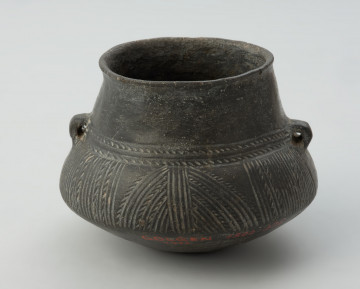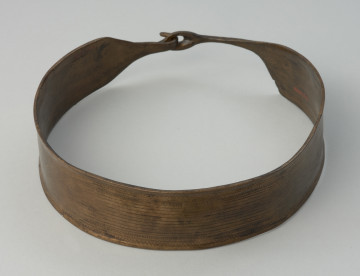
An amphora
around 750 p.n.e. — 550 p.n.e.
National Museum in Szczecin
Part of the collection: Bronze Age
The vessel served as an urn for the cremated bones of a deceased, and it was placed in a cist grave. It was found together with another urn, a pottery vessel, and a piece of a bronze object. Because of its characteristic shape, it is called “a house urn.” It features a gable roof and a rectangular hole with clay plate imitating doors. Such urns occurred in the Late Iron Age (the so-called Hallstatt C period, ca. 750–600/550 BC).
House urns were discovered in the northern regions of Poland, central Germany, and southern Scandinavia, and they can be dated to the Late Bronze Age and the Early Iron Age. The main differences are the shape and local features; for example, the urns found in Poland had stands. Such findings are a valuable source of information on the everyday life of people of the past because it is believed that the shape of urns resembles the design of houses of the population of the Pomeranian culture. The analyses showed that house urns were designed to bury cremated remnants of one person. Probably the graves were not richly furnished. Different ages and sex of buried people, as well as the relatively small number of such graves indicate that they were meant for particular individuals of a community.
Monika Witek
Author / creator
Dimensions
the entire object: height: 23 cm, width: 32.1 cm
Object type
funerary vessel
Technique
firing
Material
clay
Origin / acquisition method
legal transfer
Creation time / dating
Creation / finding place
Owner
National Museum in Szczecin
Identification number
Location / status

around 750 p.n.e. — 550 p.n.e.
National Museum in Szczecin

around 750 p.n.e. — 550 p.n.e.
National Museum in Szczecin

around 600 p.n.e. — 400 p.n.e.
National Museum in Szczecin
DISCOVER this TOPIC
National Museum in Szczecin
DISCOVER this PATH
Educational path